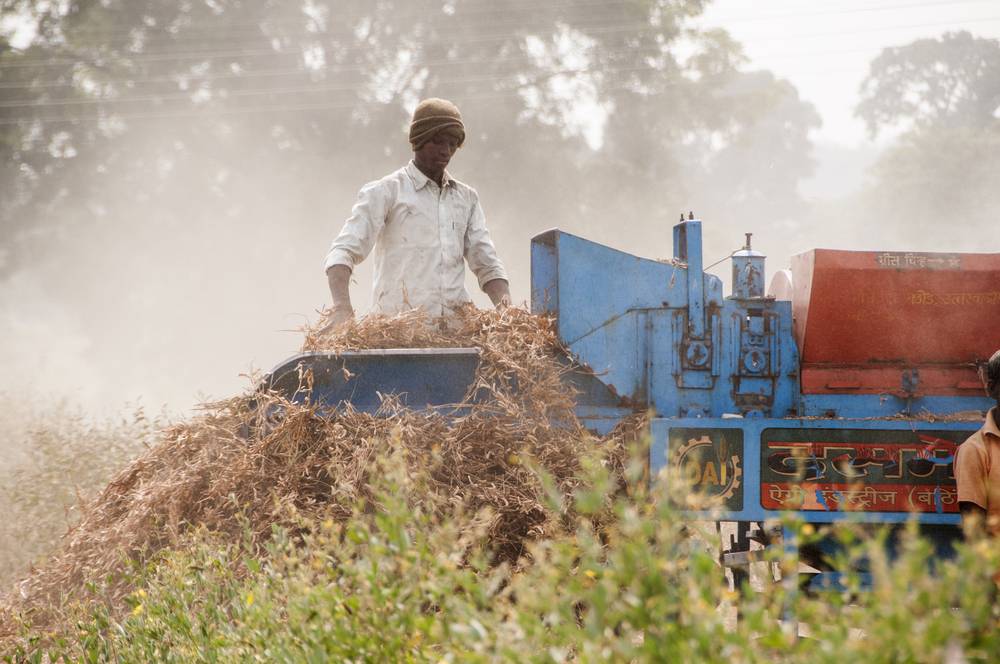 Updated on: January 27th, 2024 5:39 PM
Updated on: January 27th, 2024 5:39 PM
Agricultural Mechanization Promotion Scheme
The Ministry of Farmers Welfare, Government of India, has initiated the implementation of the approved the Agricultural Mechanization Promotion Scheme with the primary objective of reducing air pollution caused by stubble burning. It is an evident fact that metro cities such as Mumbai, Chandigarh, as well as the National Capital of Delhi are affected by greater air pollution on a year-to-year basis. One of the primary reasons behind this is said to be the burning of crop residue by farmers. Due to this, numerous other cities and villages are suffering the evil pangs of pollution and contamination of the air. Thus, in order to nullify this and control pollution, the Central Government of India is launching Agricultural Mechanization Promotion Scheme 2018-2019. The Government of India is taking all the necessary measures towards enhancing the Agricultural Mechanization Promotion Scheme, also known as Crop Residue Management.The Budget
The Central Government of India has estimated to spend nearly INR 1151.80 Crores within the financial years of 2018-2019 and 2019-2020 towards this scheme - which is expected to be split into INR 591.65 Crores and INR 560.15 Crores respectively.| Name of Scheme | Agricultural Mechanization Promotion Scheme 2018-2019 |
| Implementation Authority | Central Government of India and The Ministry of Agriculture and Farmers Welfare |
| Purpose of proposal | To decrease the rate of Air Pollution caused by Stubble Burning |
| Grantees benefited | Citizens from the states of Punjab, Haryana, Uttar Pradesh and the NCR Delhi |
| Budget allocated | INR 1151.80 Crores |
| Execution Period | Financial Years: 2018 - 2019, 2019 - 2020 |
Establishment of Farm Machinery Banks
With the help of Agricultural Mechanization Promotion Scheme, the farmers can easily hire the in-situ crop residue management machinery through which the Government is hoping to reduce air pollution caused by the agricultural sectors. Apart from this, the Scheme also ensures financial assistance of up to 80 per cent to various Farmers Societies, Farmer Producer Organization Scheme (FPOS), Self-Help Groups, Women Farmer Groups, etc.Financial Aid to Farmers
Apart from the benefits mentioned above, additional financial aid of 50 per cent is rendered to the farmers to help them purchase agricultural machinery and other types of equipment for Crop Residue Management. Thus, by providing such remarkable benefits, the Government believes that the outcome of Agricultural Mechanization Promotion Scheme will definitely reduce Stubble Burning and thereby reduce air pollution.Education, Information and Communication
On the context of Agricultural Mechanization Promotion Scheme, the Central Government of India provides some financial support to the Concerned State Government along with the Krishi Vigyan Kendras (KVKs). Such Kendras include an agricultural extension centre in India, ICAR - Central Island Agricultural Research Institutes, Central Government Institutes and Public Sector Undertakings. Besides this, the Government of India is hoping to continue this awareness by organising many campaigns through films, documentaries, radio and TV programmes, advertisement in print media, Camps, etc. for achieving Zero Stubble Burning.Beneficiaries of this Scheme
- Corresponding State Governments will identify various recipients through District Level Executive Committee (DLEC) for the establishment of farm machinery bank.
- It can also be utilized for Custom Hiring of products and procurement of Machines on individual ownership basis in order to avail the benefits in a transparent and time-bound manner.
- The State Nodal Department ties up with the Local Banks to credit financial aid towards the requirements of the farmers.
- And finally, name and details of selected beneficiaries will be documented at district level indicating Aadhar/UID numbers, and the financial assistance is expected to be paid through District Benefit Transfer (DBT)
Popular Post

In the digital age, the convenience of accessing important documents online has become a necessity...

The Atalji Janasnehi Kendra Project that has been launched by the Government of Karnataka...

The Indian Divorce Act governs divorce among the Christian couples in India. Divorce...

When an individual has more than a single PAN card, it may lead to that person being heavily penalised, or worse,...

Employees Provident Fund (PF) is social security and savings scheme for employee in India. Employers engaged...


